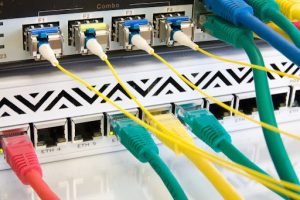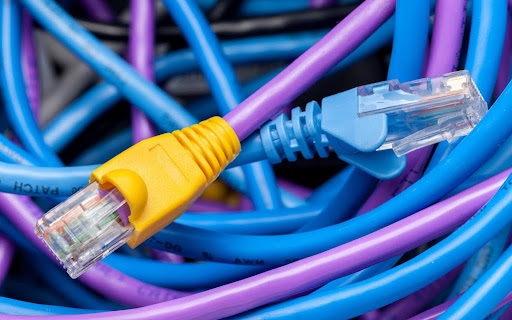“Maximize your connection with our ultimate guide to Cat6 Ethernet Cable! Experience high-speed performance for seamless connectivity.⚡
In the digital age, the backbone of our communication infrastructure is the network cable. Among the various types of cables available, the Category 6 (Cat6) Ethernet cable has emerged as a significant player in both commercial and residential networks. Understanding its features, advantages, and applications is crucial for anyone looking to optimize their network performance.
Table of Contents
Historical Context and Evolution
The development of Ethernet cables has been marked by a series of advancements aimed at increasing speed, reliability, and overall performance. A cat6 ethernet cable was introduced as an improvement over the Category 5 (Cat5) and Category 5e (Cat5e) cables. While Cat5 cables supported speeds up to 100 Mbps, Cat5e enhanced this to 1 Gbps with better signal integrity and reduced crosstalk. Cat6 cables further pushed these boundaries, supporting data transfer rates up to 10 Gbps over short distances (up to 55 meters) and up to 1 Gbps over longer distances (up to 100 meters).
Technical Specifications
Cat6 cables are constructed with four twisted pairs of copper wires, similar to their predecessors, but with tighter twists and improved shielding. The tighter twists reduce crosstalk and electromagnetic interference (EMI), which are common issues that can degrade network performance. Additionally, Cat6 cables often come with a spline, a plastic separator that isolates each pair of wires, further reducing interference.
The cables are typically rated for a bandwidth of 250 MHz, double that of Cat5e cables. This increased bandwidth allows for faster data transmission and improved overall network performance. The standard connector for Cat6 cables is the RJ45 plug, which is backward compatible with Cat5 and Cat5e jacks, making it easy to upgrade existing network infrastructure without replacing all components.

Performance and Applications
One of the primary reasons for the adoption of Cat6 cables is their superior performance in high-demand environments. These cables are particularly suited for applications that require high-speed data transfer and low latency, such as video streaming, online gaming, and large file transfers. In business settings, Cat6 cables are essential for supporting bandwidth-intensive applications like video conferencing, cloud computing, and VoIP (Voice over Internet Protocol).
Moreover, with the growing trend of smart homes and the Internet of Things (IoT), the need for reliable and fast network connections has never been greater. Cat6 cables provide the necessary infrastructure to support multiple devices simultaneously without compromising on speed or performance. This is particularly important in environments where numerous devices, such as smart TVs, security cameras, and home automation systems, are connected to the network.
Installation Considerations
Installing Cat6 cables requires careful planning and execution to maximize their benefits. One of the key considerations is the environment in which the cables will be installed. For instance, in industrial settings with high levels of EMI, shielded Cat6 cables (STP) may be necessary to prevent signal degradation. In residential settings, unshielded Cat6 cables (UTP) are usually sufficient.
Proper cable management is also crucial to maintain the integrity of the network. This includes avoiding sharp bends, keeping cables away from electrical wires, and using appropriate cable ties and organizers. Additionally, the length of the cable runs should be kept within the recommended limits to prevent signal loss and maintain optimal performance.
Future-Proofing and Upgrades
As technology continues to evolve, the demand for faster and more reliable network connections will only increase. While Cat6 cables currently offer excellent performance for most applications, it’s important to consider future-proofing your network infrastructure. This might involve planning for the eventual upgrade to Cat6a or even Cat7 cables, which offer higher bandwidth and better performance over longer distances.
For businesses, investing in Cat6 infrastructure can provide a competitive edge by ensuring that the network can handle current and future demands. It also minimizes the need for frequent upgrades, saving both time and money in the long run. For residential users, upgrading to Cat6 can enhance the overall digital experience, from streaming high-definition content to seamlessly connecting multiple smart devices.
Conclusion
The Cat6 Ethernet cable represents a significant advancement in networking technology, offering enhanced speed, reliability, and performance over its predecessors. Its ability to support high-bandwidth applications makes it an ideal choice for both commercial and residential networks. As the demand for faster and more reliable internet connections continues to grow, Cat6 cables provide a robust and future-proof solution that can meet the needs of today’s digital landscape.
In summary, whether you’re a business looking to optimize your network for high-demand applications or a homeowner seeking to improve your digital experience, the Cat6 Ethernet cable is a worthy investment. Its superior performance, ease of installation, and future-proof capabilities make it an essential component of any modern network infrastructure.
